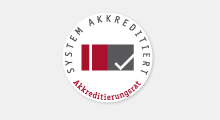Sekundärnavigation / Secondary navigation
Inhaltsbereich / Content
Former Employees

Research Interests
Topological Methods for Uncertainty Quantification: In my current research I am working on topological methods for uncertainty quantification.
Visualization and Analysis of 3D Gene Expression Data: In my ongoing research I am working on the development of PointCloudXplore, a tool for visual analysis of 3D gene expression data. Within the scope of the Berkeley Drosophila Transcription Network Project (BDTNP) experimental and computational methods are developed at the Lawrence Berkeley National Laboratory (LBNL) to systematically characterize and dissect the complex expression patterns and regulatory interactions already present in Drosophila Melanogaster prior to gastrulation. In direct cooperation with biologist from the Life Sciences Division at LBNL as well as with the Institute for Data Analysis and Visualization (IDAV) at UC-Davis and the Visualization Group at LBNL we are working on development of tools for visualization and analysis of genetic data. This close cooperation between all these highly qualified institutes enables us to develop visualization tools that facilitate genetic research and which are used by biologists in there ongoing work. The direct cooperation with genetic scientists allows us not only to validate our work at all stages of development but a group of highly qualified aspired users is directly involved in the development of the final tools. The cooperation with IDAV and the Visualization Group at LBNL allows us to develop and communicate new ideas with a group of highly qualified computer scientist which enables us to develop high quality visualization tools.
Visualization and Analysis of Laser Wakefield Particle Acceleration Data: Analysis and knowledge discovery from large, complex, multi-variate laser wakefield particle accelerator (LWFA) simulation data is a challenging task. One main feature researchers are interested in are beams of high-energy particles formed during the coarse of LWFA simulations. To enable efficient and accurate analysis of these particle beams, dedicated mechanisms for selection and detection of particle beams are needed. Furthermore, to support analysis of selected particle bunches of interest effective visualization methods are required. Since 2007 I have been working in close cooperation with the LOASIS program at LBNL on the development of methods for the analysis of extremely large laser wakefield particle acceleration (LWFA) data. In collaboration with LOASIS, the SciDAC SDM center (LBNL) and researchers from different institutions within VACET, we developed method for fast visual exploration of these highly complex datasets. I have also been working extensively on the development of methods for automatic detection and analysis of particle beams in LWFA simulation data.






